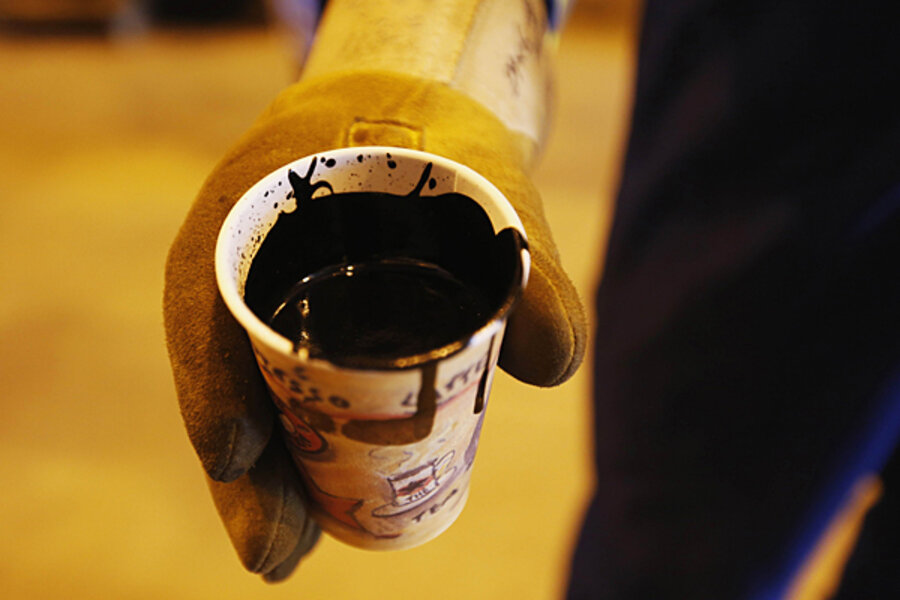Canadian oil sands pollute nearby lakes. Report is blow to Keystone pipeline.
Loading...
Production at the world's third largest source of oil has polluted surrounding waters with toxic substances, according to a new study. The findings add fuel to a fiery debate over a proposed pipeline connecting Canadian oil sands with US refineries.
Lakes as far as 56 miles away from production facilities near Fort McMurray, Alberta, show unnaturally high levels of substances linked to cancer. Researchers say they are the result of roughly half a century of development at the Athabasca oil sands.
While concentrations of carcinogens remain low compared with those found in urban lakes, scientists at Queen's University in Kingston, Ontario, called the findings, released Monday, "worrying" and warned of future effects from the spread of oil sands contaminants.
“We’re not saying these are poisonous ponds,” John Smol, a professor and the study's lead author told The New York Times. “But it’s going to get worse. It’s not too late but the trend is not looking good.”
It is worrying because oil sands production near Fort McMurray is on the rise. In 1980, Canada was producing the equivalent of 100,000 barrels of oil a day. By 2010, it had risen to 1.5 million barrels. By 2025, it's slated to increase again to 3.7 million barrels per day.
Monday's findings may bolster support for those who say treatment of the oil sands – a viscous form of oil – poses serious environmental threats. The same day the report was released, protesters assembled at locations across the United States to oppose the construction of Keystone XL. The pipeline would transport the Athabasca oil sands product to refineries in the US for the production of gasoline and other fuels.
President Obama has delayed making a final decision on issuing permits for the project, citing a need for greater study of its potential environmental costs. Last December, a Texas judge briefly ordered TransCanada Corp., the company behind the project, to stop work on the pipeline, after a property owner challenged the company in court.
Monday also brought some good news for Keystone advocates, who say the pipeline poses minor environmental risk and major economic reward. In its final evaluation for Nebraska Gov. Dave Heineman, the state's Department of Environmental Quality concluded that the pipeline's construction would bring in $481.1 million in economic benefits and 4,560 new or existing jobs to the state of Nebraska.
The report also found "minimal environmental impacts" as a result of the pipeline's construction and operation.
Opponents emphasize the effect of what comes out of its construction and operation.
"If burned, tar sands spells 'game over' for a livable climate and would harm community drinking water and farmers’ livelihoods across the region," reads the website of Tar Sands Blockade, the group behind Monday's protests.





